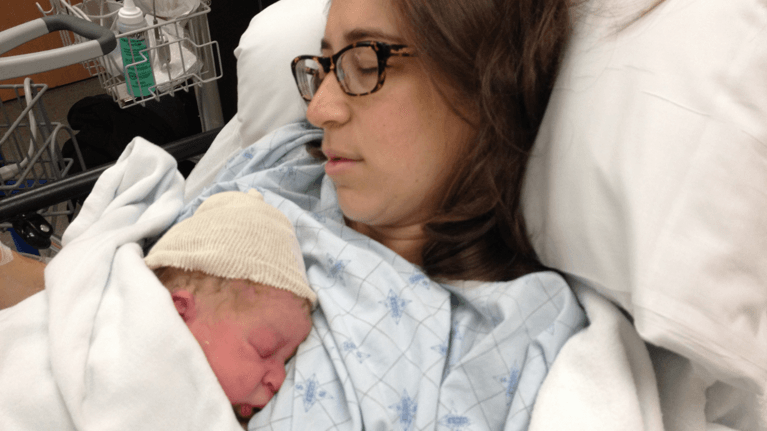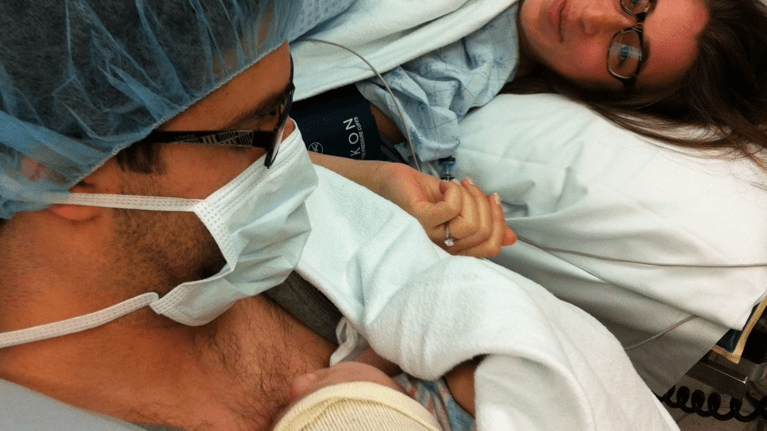I Didn’t Know My C-Section Incision Was Infected– Here’s Why
By Lisa Zeltzer
Jun 19, 2023
Lisa Zeltzer
After an arduous 31-hour labour, during which my son’s heart rate fluctuated indicating that he was in distress, I had an emergency C-section. Although I wanted a natural birth, nothing about it felt natural to me.
And then, all of a sudden, I was a parent—and my son was insatiable. This was unfamiliar territory. I joked that I had fat-free breast milk because he never seemed full. I was up with him constantly during our first week together. I really wanted to like the kid, but he wasn’t giving me much to go on.
I had never had a C-section before, so I presumed the extreme pain I was experiencing was just par for the course. But by day nine, every movement felt excruciating. I took to the phone. I called every acquaintance of an acquaintance I could think of to check if what I was feeling was normal, yielding mixed results.
That evening as I was sitting down, my C-section incision opened. It was obvious that something was wrong. Back to the hospital we went, with our new baby in tow. My C-section incision was infected. I would need frequent wound care. They bandaged me up and sent me home with assurances that a homecare nurse would be in touch in the morning.

The morning came, and the morning went. No one got in touch. So with a raging infection and a cluster-feeding newborn, my husband and I sleuthed our way to the bottom of the communication breakdown. As luck would have it, the homecare agency never received the referral that had been allegedly sent via fax machine, in the middle of the night, from the Emergency Department. Shocker. After some heavy-handed advocating, a nurse eventually arrived at the house.
In the days and weeks that followed, our bedroom was transformed into a clinic of sorts, with bandages, solutions, and steri-strips strewn about. There was not much dignity in breastfeeding while a nurse packed my wound, but I got through it.
This whole experience got me thinking. Why did my C-section get infected? And how did I miss the warning signs? I sat down with Dr. Stephanie Ferguson, OB-GYN and professor at McMaster University to learn more about infected C-section incisions.
How can you tell if a C-section incision is infected?
First, pay attention to how the incision looks, says Dr. Ferguson. It may be infected “if it’s red, hot to touch, tender, or swollen along and around the incision.”
Some clear discharge from the incision can be normal, but if large amounts are oozing from the incision or if the discharge is discolored and has a foul smell, see a doctor.
An infection may also be accompanied by fever, chills, rigors (a sudden feeling of cold with shivering accompanied by a rise in temperature), feeling unwell and persistent or increasing pain.
How common is an infected C-section incision?
“When you look at the studies, the rates are quite varied,” says Dr. Ferguson. “Some studies say anywhere from three to four percent, others say up to 10 to 15 percent and the rates largely depend on risk factors.”
These factors can increase your risk for infection:
- Emergency C-Section
- Prolonged labour with ruptured membranes
- Suspected chorioamnionitis (infection in labour)
- Lengthy surgery
- Gestational or pre-existing diabetes
- Immunocompromised condition
- Elevated BMI (Body Mass Index)
- Smoker

If you suspect your C-section incision is infected, what should you do?
“If you have any suspicion of infection, call your care provider. If you can’t reach your care provider, call the labour and delivery department where you delivered and see if you can come in to see the doctor on call.”
How can you treat an infected C-section incision at home?
Attempting to treat an infected incision at home is not recommended. “The treatment is antibiotics,” says Dr. Ferguson “and in some cases the incision may need to be partially or fully opened up and packed to treat the infection.”
How can you prevent your C-section incision from becoming infected?
First, Dr. Ferguson says that contrary to common belief, pre-shaving the area is unnecessary and may even increase the risk of infection.
She says to keep the incision dry and clean. Exposing the incision to air, wearing loose-fitting cotton underwear, and gently patting it dry or using a cool setting on a hair dryer for drying are helpful practices.
During feeding, positioning the baby to avoid pressure on the incision is recommended when possible.
“If you have any suspicion of infection, especially if you are at a higher risk, don't hesitate to go in and be seen” advises Dr. Ferguson.
The bottom line:
Infected C-sections can turn into more serious infections. Recognize the signs and know your risk factors. When in doubt, get it checked out.
Advocate, advocate, advocate. If you are told there will be a follow-up and you haven’t heard anything, don’t wait. Recruit help, and advocate for what you need.
Share your experience to help others. If you have feedback that could lead to better care for others, contact your hospital’s Patient Relations Department or consider volunteering as a Patient and Family Partner.
Weekly Newsletter
Keep up with your baby's development, get the latest parenting content and receive special offers from our partners